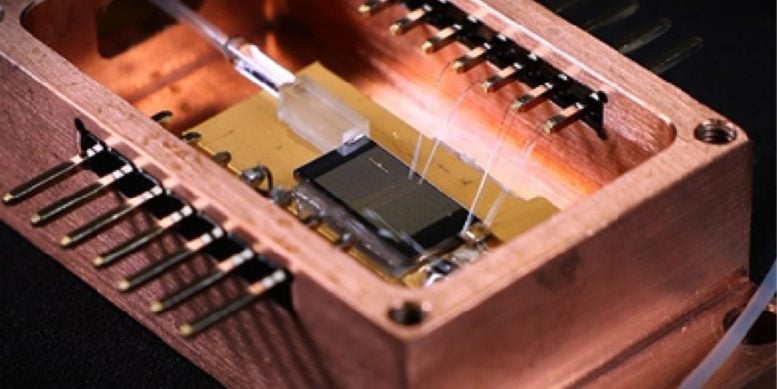
A team of researchers has created a powerful new laser that fits on a microchip.
It’s faster, more affordable, and easier to tune than existing precision lasers. The breakthrough could transform technologies like Lidar in self-driving cars and gas detection systems.
Laser Light Powers Modern Tech
Laser technology plays a crucial role in modern science and engineering, especially in applications that rely on precise measurements or rapid data transfer. It is the foundation for technologies such as self-driving cars, fiber optic communication networks, and systems that monitor air quality by detecting trace gases.
A team of researchers led by Associate Professor Johann Riemensberger from the Department of Electronic Systems at the Norwegian University of Science and Technology (NTNU) has now developed a new kind of laser designed to overcome several of the challenges found in current models.
Compact and Cost-Effective Innovation
“Our results can give us a new type of laser that is both fast, relatively cheap, powerful, and easy to use,” says Riemensberger.
The findings, recently published in Nature Photonics, describe a major advance achieved through collaboration between NTNU, the Swiss École Polytechnique Fédérale de Lausanne (EPFL), and Luxtelligence SA.
Self-Driving Cars and Air Quality Detectors
Traditional precision lasers tend to be bulky, costly, and complicated to adjust. “Our new laser solves several of these problems,” says Riemensberger.
This improvement opens the door for use in self-driving vehicles, which rely on a sensing method called Lidar to detect and measure the distance to nearby objects. Lidar works by analyzing the time it takes for light from the laser to reflect back or by detecting slight phase changes in the returning light wave. The new laser performs these measurements with remarkable accuracy
The researchers also achieved promising results when testing the device for detecting hydrogen cyanide gas in the atmosphere. This chemical, also known as “hydrocyanic acid,” is extremely poisonous even in small amounts, making rapid detection critical for safety and environmental protection.
Advanced Materials and Microscopic Circuits
To build the new laser, the team used advanced materials combined with miniature light circuits. The result is a highly stable and powerful beam that can be tuned smoothly and quickly, without abrupt frequency jumps.
“You can also easily control it with just one control instead of many,” Riemensberger points out.
Because it is fabricated using existing chip technology, the laser can be produced on a large scale at relatively low cost.
“Our findings make it possible to create small, inexpensive, and user-friendly measuring instruments and communication tools with high performance,” Riemensberger said.
Reference: “Ultrafast tunable photonic-integrated extended-DBR Pockels laser” by Anat Siddharth, Simone Bianconi, Rui Ning Wang, Zheru Qiu, Andrey S. Voloshin, Mohammad J. Bereyhi, Johann Riemensberger and Tobias J. Kippenberg, 5 June 2025, Nature Photonics.
DOI: 10.1038/s41566-025-01687-0
The work was a collaboration between EPFL (experiments), Luxtelligence SA (chip production) and NTNU (design and simulations). It started when Riemensberger was still a postdoctoral fellow at EPFL. The collaboration continues through an EIC Pathfinder OPEN scholarship called ELLIPTIC.
Never miss a breakthrough: Join the SciTechDaily newsletter.
Follow us on Google, Discover, and News.
